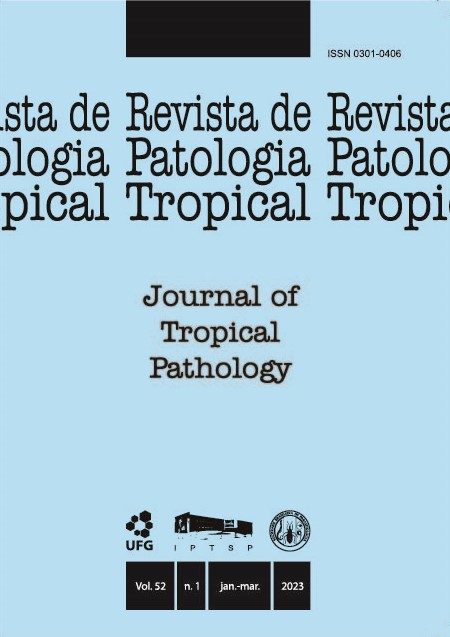Epidemiological aspects of visceral leishmaniasis in Rio Grande do Norte, Brazil
DOI:
https://doi.org/10.5216/rpt.v52i1.74030Abstract
Visceral Leishmaniasis (VL) is a parasitic disease caused by Leishmania protozoa and transmitted by the bite of sand fly insects. This study aimed to describe the epidemiological aspects of VL in Rio Grande do Norte (RN), using variables inserted in the Information System for Notifiable Diseases, for the period from 2013 to 2019. The chi-square test of independence was used with p<0.05 considered statistically significant. 635 cases of VL were reported in RN, with stability of new cases in the analyzed period. 60% of cases were autochthonous, 84 (50.2%) municipalities in RN had autochthonous cases, with 70 (18.2%) cases in Natal and 58 (15.1%) in Mossoró. The most affected age group was 20-59 year old (57.3%) followed by 0-9 year old (23.8%), 10-19 year old (10.4%) and 60 year old or older (8.5%). There was a positive association between the 0-9 and 10-19 ranges with females and 20-59 with males (p=0.0001). Among the 532 individuals, 54.5% had a low level of education, and these, as well as the illiterate, associated with males (p=0.001). 85.3% of 612 cases were in black/brown group and 77.1% of 632 in urban/periurban residents. 27.6% of 500 were co-infected with HIV, 77.5% in males and 89.8% in adults. 70.7% progressed to cure and 6.8% died from VL. The study shows that the control measures adopted within the scope of the National Program for the Control of Leishmaniasis should be reassessed since there has been no decrease in cases, even though it has had stability over the years in Natal and a tendency to growth in Mossoró, the most affected areas.
KEY WORDS: Visceral leishmaniasis; Leishmania; epidemiology.
Downloads
Downloads
Published
How to Cite
Issue
Section
License
The manuscript submission must be accompanied by a letter signed by all authors stating the full name and email address, confirming that the material has not been published or is under consideration for publication elsewhere, and agreeing to transfer copyright in all media and formats for Journal of Tropical Pathology. The authors will not be paid for published articles. They are solely responsible for the content of those articles, even if the Editor holds the right to adjust them to the norms of the journal.
The reviewers will not be paid for the peer review process.

